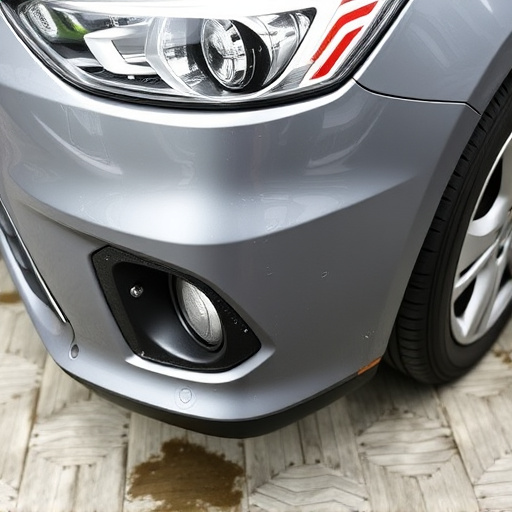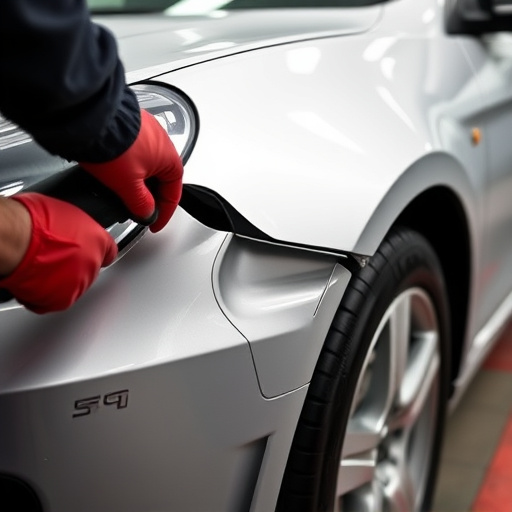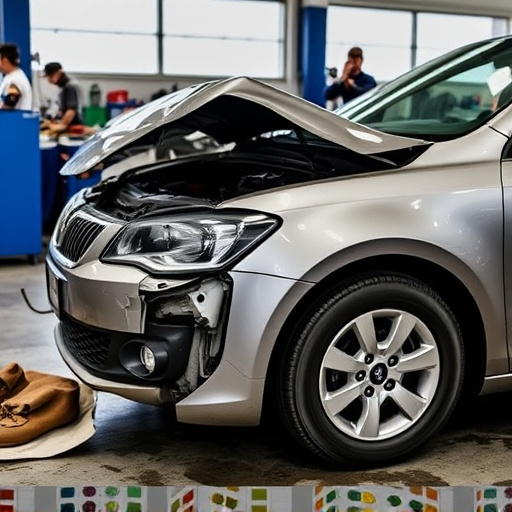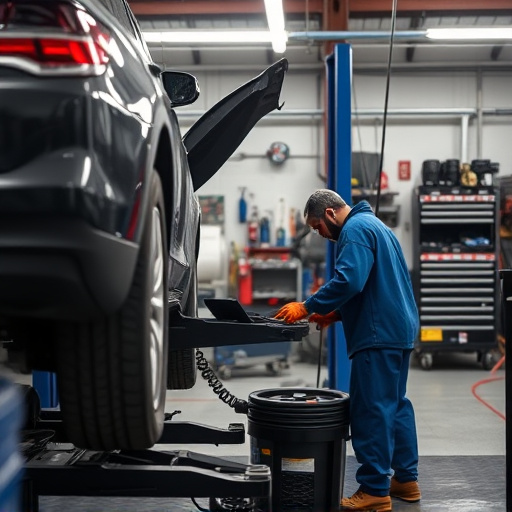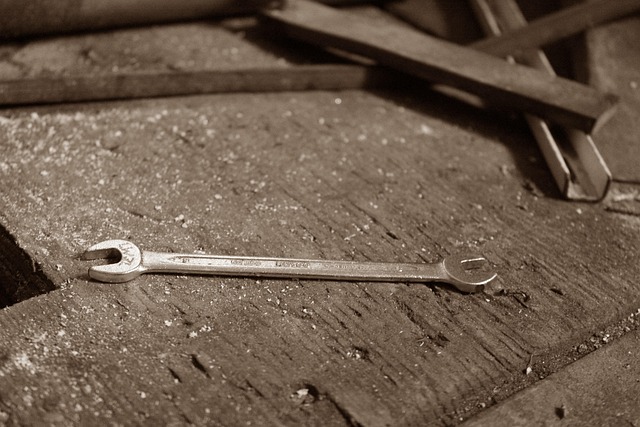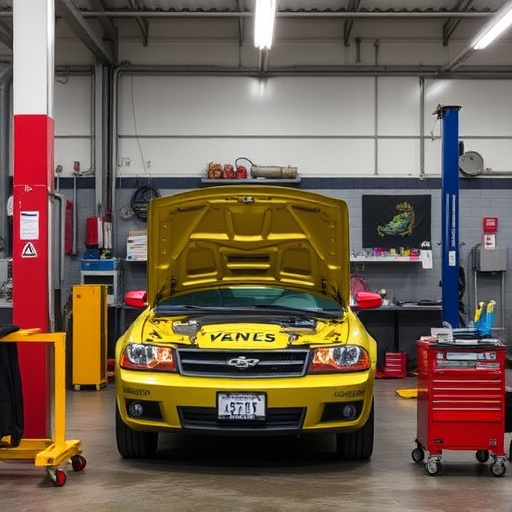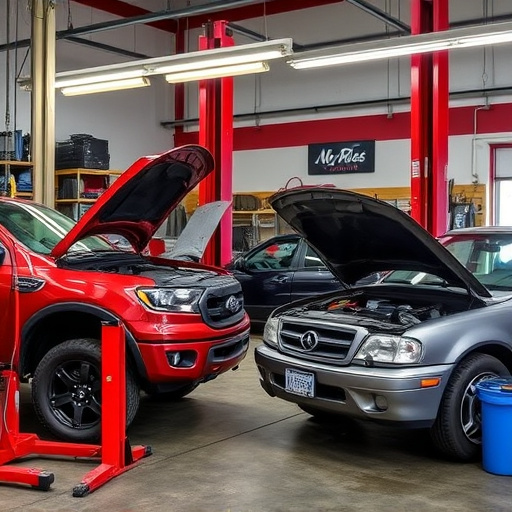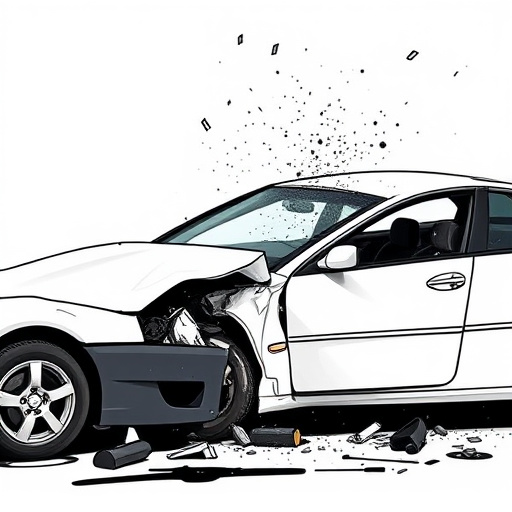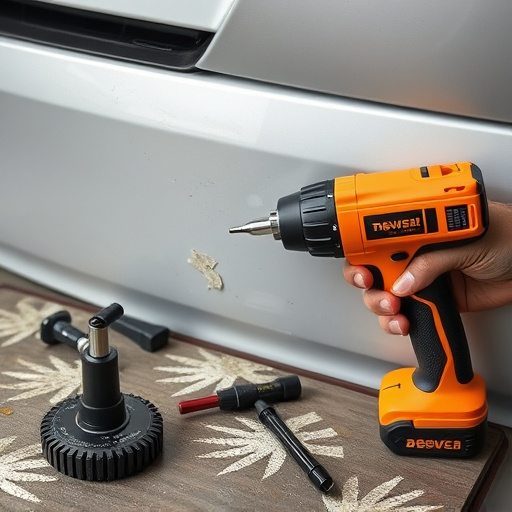Mercedes Lane Assist, an advanced driver assistance system (ADAS), uses sensors, cameras, and radar to detect lane markings and road edges for enhanced safety and comfort. Regular Mercedes lane assist recalibration is crucial to maintain the accuracy and reliability of these systems. This process fine-tunes vehicle sensors to recognize subtle variations in lane markings, ensuring optimal performance even after damage or wear. By addressing issues like body dents that might interfere with sensor function, Mercedes collision repair shops contribute to safer driving environments and enhanced vehicle longevity.
Mercedes’ Lane Assist system is a driving aid that helps prevent unintentional lane departures. Through advanced camera technology, it detects lane markings and road edges, guiding drivers back onto the correct path. This article delves into the functionality of Mercedes Lane Assist and explores the vital role of recalibration in enhancing road safety. We’ll break down how the system identifies lane markings and road edges, highlighting the benefits and techniques employed, all centered around the key concept of Mercedes lane assist recalibration.
- Understanding Mercedes Lane Assist and Its Functionality
- The Role of Recalibration in Enhancing Road Safety
- Detecting Lane Markings and Road Edges: Techniques and Benefits
Understanding Mercedes Lane Assist and Its Functionality

Mercedes Lane Assist is an advanced driver-assistance system (ADAS) designed to enhance safety and comfort during driving. This technology employs a suite of sensors, cameras, and radar to detect lane markings and road edges, providing real-time guidance to the driver. Its primary function is to help prevent accidents by alerting drivers when they drift out of their lane or approach uneven road surfaces.
The system works through regular Mercedes lane assist recalibration, ensuring optimal performance. During this process, the vehicle’s sensors are finely tuned to recognize even subtle variations in lane markings and road edges. This recalibration not only improves the accuracy of the Lane Assist feature but also ensures that it functions seamlessly across different road conditions and weather scenarios. By maintaining and updating this critical calibration, Mercedes guarantees that its vehicles offer the highest level of safety, making them a step ahead in the automotive industry’s push towards autonomous driving.
The Role of Recalibration in Enhancing Road Safety

Mercedes Lane Assist recalibration plays a pivotal role in enhancing road safety by continuously refining the system’s accuracy and reliability. Regular recalibration ensures that the advanced driver-assistance system (ADAS) correctly detects lane markings and road edges, even after potential damages or wear over time. This is crucial as it allows the vehicle to provide accurate steering assistance, reducing the risk of lane-keeping errors and collisions.
By incorporating this process, a Mercedes collision repair shop or vehicle repair services provider can mitigate issues arising from minor accidents or normal wear, such as dents in the car’s body that might interfere with sensor function. Ultimately, the goal is to ensure the safety and comfort of drivers and passengers on the road by keeping the ADAS system up-to-date and performing dent removal where necessary, thereby fostering a safer driving environment.
Detecting Lane Markings and Road Edges: Techniques and Benefits

Mercedes lane assist recalibration is a sophisticated technology that enables the vehicle to detect and interpret lane markings and road edges with remarkable accuracy. This process involves advanced sensors, cameras, and software algorithms that work in harmony to analyze the surroundings. By calibrating these systems, the car can better understand the physical boundaries of the road, ensuring safer and more comfortable driving experiences.
The benefits of this technique extend beyond improved safety. Accurate lane detection allows for precise steering control, enhancing maneuverability and responsiveness. For car repair services or automotive body shop professionals working on vehicle bodywork, understanding how Mercedes lane assist recalibration works is crucial. It enables them to perform diagnostics, identify issues with the system, and even offer tailored solutions for optimal performance, contributing to overall vehicle longevity and safety on the road.
Mercedes Lane Assist recalibration is a game-changer in enhancing road safety. By continuously detecting lane markings and road edges, this advanced system ensures drivers stay on course, reducing the risk of accidents caused by lane drifting or deviation. Through sophisticated techniques like camera technology and AI algorithms, Mercedes Lane Assist recalibration not only improves driving experience but also offers a robust safety net. This feature underscores the commitment of Mercedes to revolutionize automotive safety in today’s digital era.

